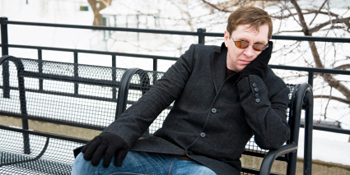Do you ever feel less energized, motivated or happy during the winter months? If you do, you aren’t the only one. Many people’s moods and feelings are affected by the amount of sunshine and vitamin D they receive. “Some studies suggest an association between low vitamin D levels in the blood and various mood disorders, including depression, seasonal affective disorder (SAD), and premenstrual syndrome (PMS)” says Mayo Clinic.
There are over three million cases per year of seasonal affective disorder (SAD), which is a mood disorder that occurs around the same time every year. SAD most often occurs during the fall and winter, but it can also occur during the spring and summer.
SAD can cause people to feel moody, gain weight, crave carbohydrates, lack focus and feel more tired even if they are sleeping more. Even if you don’t meet the qualifications of being officially diagnosed, getting enough sunlight is still important to your overall mood.
In previous years, I would always notice these types of symptoms begin to flare as fall turned to winter. In order to prevent my normal winter blues, I began to go for walks or runs around my neighborhood for 30 minutes a few times each week. I even went for walks when it was snowing, so that I didn’t remain inside for too long.
Since I started doing this, I began to not notice the drop in mood, focus and energy that I had been associating with winter for years. Not only that, but I also felt better overall. Below are some of the other health benefits to spending time outside even when it’s cold:
Less Stress and Anxiety
There is something innately relaxing —for most people—about spending time in the great outdoors. It gives you the chance to bring yourself into the present, sending your anxious thoughts out of your mind for a little while. Taking time to clear your head has lasting effects on your overall stress and anxiety levels. Also, studies have shown that certain scents within nature, such as jasmine, pine and lilacs have been shown to reduce stress and anxiety.
Stronger immune system
Vitamin D is a critical nutrient to how our body maintains a healthy and strong immune system. The easiest way to get this vital nutrient is by spending time soaking in the sun.
When we are breathing fresh air amongst plants and trees, we are also breathing in phytoncides. These are airborne chemicals that plants give off to protect themselves. This natural chemical contains qualities that are meant to help fight off disease.
More Energy
Spending a lot of time inside can alter our circadian rhythms and throw off our sleep schedule. Being exposed to sunlight in the morning helps recalibrate these cycles, so that we sleep better at night and feel more energized during the day.
Improved Focus
The urban environments we are accustomed to constantly drain our attention spans. Between cell phones, traffic jams, crowding and noise, are brains need a break every once in a while. “Using too much directed attention can lead to what they call “directed attention fatigue” and the impulsivity, distractibility and irritability that accompany it. The inherent fascination of nature can help people recover from this state” research from the American Psychological Association shows. Spending time focusing on the nature that surrounds us allows our brains to rest, which in turn helps us to focus better later.
If you are worried about being cold, dress the way you would if you were a kid on a snow day: wear layers, gloves, a scarf, a hat, etc. Or do a form of exercise that will get your blood pumping and warm you up. You can also bring a hot beverage along with you for your activity. Especially on a sunny day, preparing for the cold can be manageable.
Looking for ideas to get started? Here are my 10 favorite things to do outside:
- Walk around a lake or park
- Find a cozy spot outside to read
- Eat lunch outside
- Play Frisbee with a friend
- Go for a run around my neighborhood
- Hike a trail
- Ice skate at the outdoor rink
- Borrow (and make sure to return!) a friend’s dog and go to a dog park
- Get a group together to play capture the flag (or any other game)
- Go on a ski trip!
Whoever this anonymous person is, he or she got it right: “I’ve never found time spent amongst nature to be a waste of time.”
By Laura Greenstein
https://www.nami.org/Blogs/NAMI-Blog/December-2015/Go-Take-a-Hike-(and-Get-Some-Vitamin-D)


